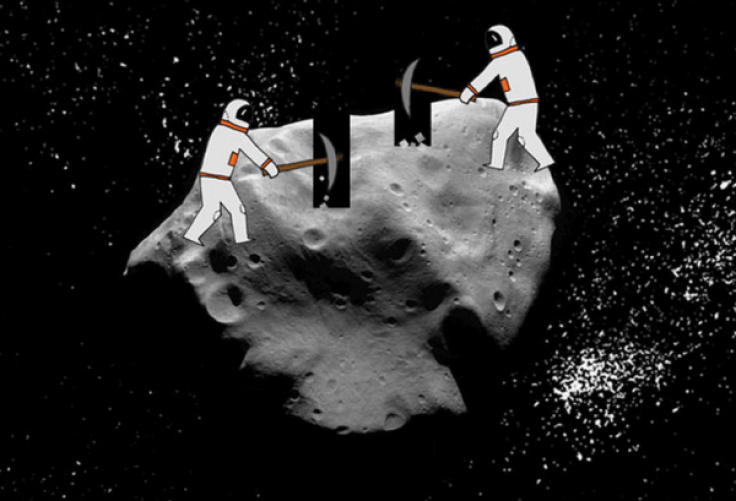Space Mining: NASA And Caterpillar (CAT) Team Up To Harness The Potential Of Mining On Asteroids, The Moon And Mars

If you’ve seen the 1998 Hollywood blockbuster "Armageddon," you know that the movie follows a group of blue-collar drillers sent by NASA to drill a very deep hole in a Texas-sized asteroid that's hurtling toward Earth. The movie culminates in Bruce Willis dramatically sacrificing himself by staying behind to manually detonate the nuclear bomb that his team has embedded in the asteroid to split it apart and prevent it from destroying Earth.
NASA placed a disclaimer at the end of the credits that read: "The National Aeronautics and Space Administration's cooperation and assistance does not reflect an endorsement of the contents of the film or the treatment of the characters depicted therein."
But now, 15 years later, drilling and mining on asteroids is a well-researched and soon-to-be reality.
The idea of mining in space has been written about for decades, but it’s not just about bringing back new and unusual rocks from asteroids; it's actually crucial for future settlements on the moon and Mars.
That's why NASA has recently teamed up with heavy-equipment giant Caterpillar Inc. (NYSE:CAT) to develop drilling and mining technologies that could one day be used in space. While Caterpillar is still very much dedicated to the application of its technology on earth, its forward-looking work with NASA explores possible uses in space.
“A key area that NASA is interested in is robotics,” said Eric Reiners, manager of automation systems for Caterpillar. “Another big area that aligns more to what Caterpillar does here on Earth is called ISRU [In Situ Resource Utilization] or in other words, how to live off of the land.”
He's referring to accessing the frozen water NASA believes could be trapped in the polar regions of Mars, the key to any long-term settlement. Once it’s extracted, it could be used for drinking water, turned into oxygen, or made into rocket fuel. With water on hand, settlers could potentially grow food instead of relying on expensive deliveries from Earth that could take months to receive, depending on Earth’s alignment with Mars.
Besides facilitating space settlements, another key area of exploration for NASA is mining the precious metals embedded in large asteriods, which could be worth millions back here on Earth -- metals like iron, nickel, titanium, platinum group metals, crucial to fuel-cell and clean-tech projects, and rare-earth elements such as lithium, used in batteries and mobile phones. The moon, too, holds troves of mineable resources, such as isotope helium-3, a precious fuel source for future nuclear fusion plants, another key factor in setting up a base there.
NASA better move fast, given the recent growth in private space exploration, with numerous companies like SpaceX popping up, all intent on finding, mining and bringing back the precious materials on asteroids.
So, how do you capture an asteroid that’s moving at a possible speed of 67,000 mph?
Well, you can either land on the biggest asteroids and mine from there, or you can capture the smaller ones. According to space researchers working for the Keck Institute for Space Studies, one approach would be to launch a slow-moving spacecraft propelled by a 40kW solar electric propulsion system on an Atlas V launch rocket. The spacecraft would target an asteroid, around 7 meters in diameter, and then adjust its speed to match the velocity and spin of the asteroid, capture the asteroid in a 10-meter-by-15-meter bag. Thrusters would then readjust to account for the spin and bring the asteroid back to lunar orbit. It would then be taken to the moon for research purposes.
Those looking to mine asteroids would have to land and set up a base directly on the asteroid and ferry the materials back to Earth.
© Copyright IBTimes 2024. All rights reserved.












